
Soutenance de thèse
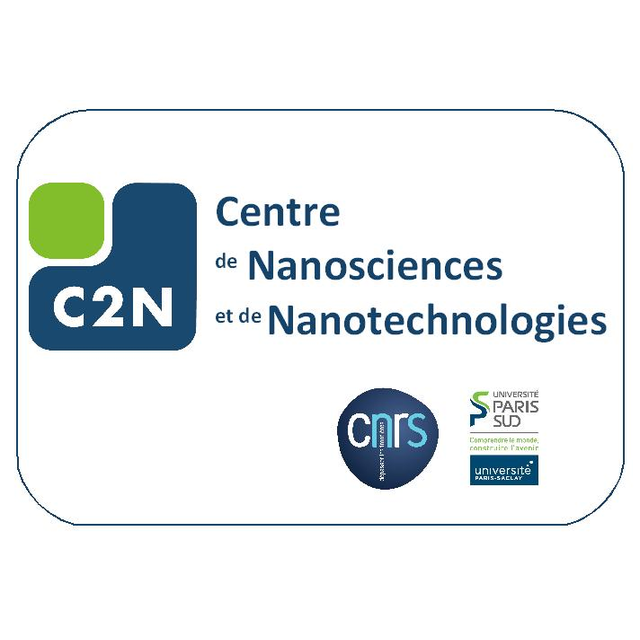
Développement de dispositifs à nanofils de semiconducteurs III-V pour le photovoltaïque
C2N site orsay, salle 44, Orsay CedexSoutenance de thèse
Depuis une vingtaine d’année les nanofils des semiconducteurs suscitent un intérêt majeur pour des applications diverses grâce à leurs propriétés optoélectroniques particulières. Dans le domaine du photovoltaïque ils présentent aussi un atout majeur. La combinaison du fort coefficient d’absorption des semiconducteurs III-V et le faible coût des substrats de silicium permettraient la réalisation des cellules photovoltaïques à faible coût et à haut rendement. C’est dans ce contexte que s’est déroulé cette thèse qui visait le développement des dispositifs à base des nanofils III-V pour le photovoltaïque. Dans une première partie, les techniques de nanofabrication pour la réalisation des dispositifs à base d’ensemble de nanofils pour les cellules photovoltaïques sont présentées. Ensuite, la fabrication et la caractérisation de dispositifs à base d’ensembles de nanofils de GaN pour les applications photovoltaïque sont permis d’ouvrir la voie au développement des cellules solaires tandems d’InGaN⁄Si. Dans la suite des travaux on a étudié la croissance des nanofils de GaAs du type cœur-coquille sur Si ainsi que les étapes technologiques pour la fabrication des dispositifs à base d’ensemble de nanofils dans l’optique de préparer le terrain pour la réalisation d’une cellule tandem III-V sur Si. Enfin la croissance et la caractérisation électro-optique des nanofils contenant des jonctions axiales de GaAsP crus par la méthode VLS-EJM a permis de déterminer le type de dopage et l’optimisation de la structure en vue d’obtenir un effet photovoltaïque.
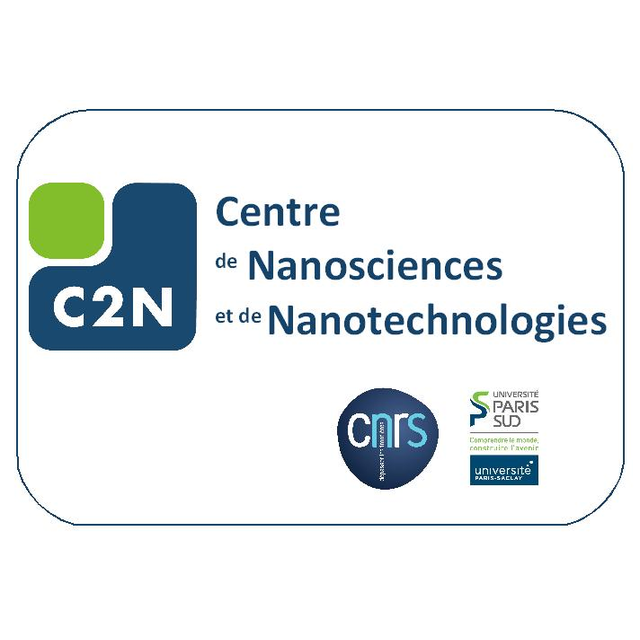
Étude théorique des propriétés thermoéletriques de nanostructures
CentraleSupelec, , Gif-sur-Yvette cedexSoutenance de thèse
Composition du jury proposé:
Jérôme SAINT-MARTIN, Maître de Conférence, Université Paris Sud (C2N), Directeur de thèse
Sebastian VOLZ, Directeur de Recherche, LIMMS/CNRS-IIS, Co-directeur de thèse
Samy MERABIA, Chargé de Recherche, CNRS, ILM, Rapporteur
Mathieu LUISIER, Associate Professor, ETH Zurich, Rapporteur
Jelena SJAKSTE, Chargé de Recherche, LSI, Palaiseau, Examinateur
David LACROIX, Professeur, Université de Lorraine, CNRS, LEMTA, Examinateur
Jay AMRIT, Maître de Conférence, Paris Sud, Orsay - LIMSI-CNRS, Invité
Abstract:
Les générateurs thermoélectriques convertissent directement l'énergie thermique en énergie électrique. Ils pourraient devenir de plus en plus utiles à des fins de récupération d'énergie et font l'objet de recherches actives. Cependant, les meilleurs matériaux thermoélectriques sont rares et polluants.
Le Silicium et le Germanium seraient des matériaux intéressants si leur efficacité thermoélectrique était améliorée. Pour ce faire, la nanostructuration est une voie possible, par exemple en introduisant des faces rugueuses ou de nouvelles interfaces semi-transparentes.
Récemment, des nanofils polyphasés (composés d'une alternance de phases cubiques et hexagonales de Si et Ge) ont été fabriqués, mais la caractérisation expérimentale de nanostructures aussi complexes comprenant des matériaux exotiques peut être difficile.
Dans cette thèse, nous étudions en détail le transport thermique dans des nanostructures avec des simulations numériques. Une méthode Monte Carlo originale a été développée, avec une description "full band" des matériaux. Elle inclut des modèles pour les faces rugueuses et les interfaces entre matériaux. Des simulations de Dynamique Moléculaire sont également effectuées pour caractériser les propriétés des interfaces.
Nous confirmons que les phases hexagonales de Si et Ge ont une conductivité thermique inférieure à celle des phases cubiques correspondantes. Le modèle "full band" montre que le flux thermique est fortement anisotrope. Des modèles semi-analytiques habituels n'ont pas pu reproduire la conductivité thermique des nanostructures simulées avec des faces rugueuses.
De plus, ces faces ont tendance à concentrer le flux de chaleur dans la direction principale de la nanostructure. Enfin, certaines interfaces polyphasées peuvent avoir une conductance thermique presque aussi faible que les interfaces Si/Ge, et pourrait ainsi améliorer significativement l'efficacité thermoélectrique des nanofils polyphasés.
La méthode Monte Carlo présentée peut facilement être utilisée pour étudier une large gamme de matériaux, et elle est capable de modéliser des nanostructures arbitrairement complexes.
A l'avenir, les simulations en Dynamique Moléculaire seront utilisées pour paramétrer un modèle plus réaliste d'interfaces.
Mots clefs: thermoelectricité, simulation, Monte Carlo, Dynamique Moleculaire, transport thermique
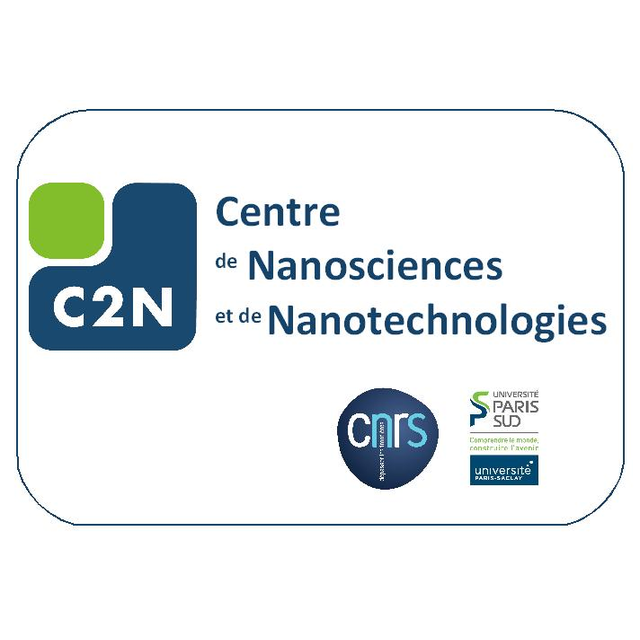
(en anglais) Piezoelectric nitride nanowires for energy harvesting and piezosensing
C2N site Orsay, Salle 44, Orsay CedexSoutenance de thèse
Jury members :
Maria TCHERNYCHEVA , Directeur de recherche, Université Paris-Sud, Directeur de thèse
François JULIEN, Directeur de Recherche, Université Paris-Sud, CoDirecteur de thèse
Joel EYMERY, Directeur de Recherche, CEA-INAC, Examinateur
Olga BOYKO, Maître de Conférences, L’Institut des NanoSciences de Paris (INSP),Examinateur
Elie LEFEUVRE, Professeur, Université Paris-Sud, Examinateur
Guilhem LARRIEU, Chargé de Recherche, LAAS, Rapporteur
Guylaine POULIN-VITTRANT, Chargé de Recherche, Université de Tours, Rapporteur
Noëlle GOGNEAU, Chargé de Recherche, C2N, Invitée
Pascal Chretien, ingerieur de recherche, Génie électrique et électronique de Paris(GEEPS)
Abstract :
This PhD work focuses on the study of GaN nanowire-based piezogenerating devices. The main objective is to develop novel devices for mechanical-to-electrical energy conversion for energy harvesting and for detection of transient deformations. The active material of the developed devices consists of a polymer-embedded nanowire membranes containing either molecular beam epitaxy (MBE) grown GaN nanowires or metal-organic chemical vapor deposition (MOCVD) grown GaN microwires.
Three device architectures are explored, namely a piezogenerator with a rigid matrix, with a flexible matrix and a fully flexible device. Two home-made mechanical excitation set-ups are used to characterize the generators. In particular, tapping mode and continuous compression deformations are applied to explore the devices’ electrical performance in a large frequency range (from 1 Hz to 3 kHz). Based on these extensive experimental investigations, a panoramic summary of the generator transient behavior under various deformation conditions are made. A Schottky diode design and different versions of capacitive design for the piezogeneration are compared, and their equivalent electrical circuits are proposed. The piezogenerators’ working mechanisms are further validated by experimental investigations.
Finally, a process to fabricate fully flexible generators and sensors is developed and these flexible devices are extensively characterized. In particular, a flexible device composed of a matrix of active pixels is demonstrated.
For the MBE nanowire-based piezogenerators on a rigid substrate, the best recorded average power output density reaches 22.1 mW/cm3. For the MOCVD microwire based flexible generators, the best recorded average power output density attains 16.5 µW/cm3. The flexible devices show a good sensitivity to ambient vibrations and respond stably to finger tapping deformations. An average energy of about 100 pJ can be delivered by the flexible device under one finger tapping gesture.
Keywords : piezogenerator, nitride, nanowire, piezoelectric semiconductors
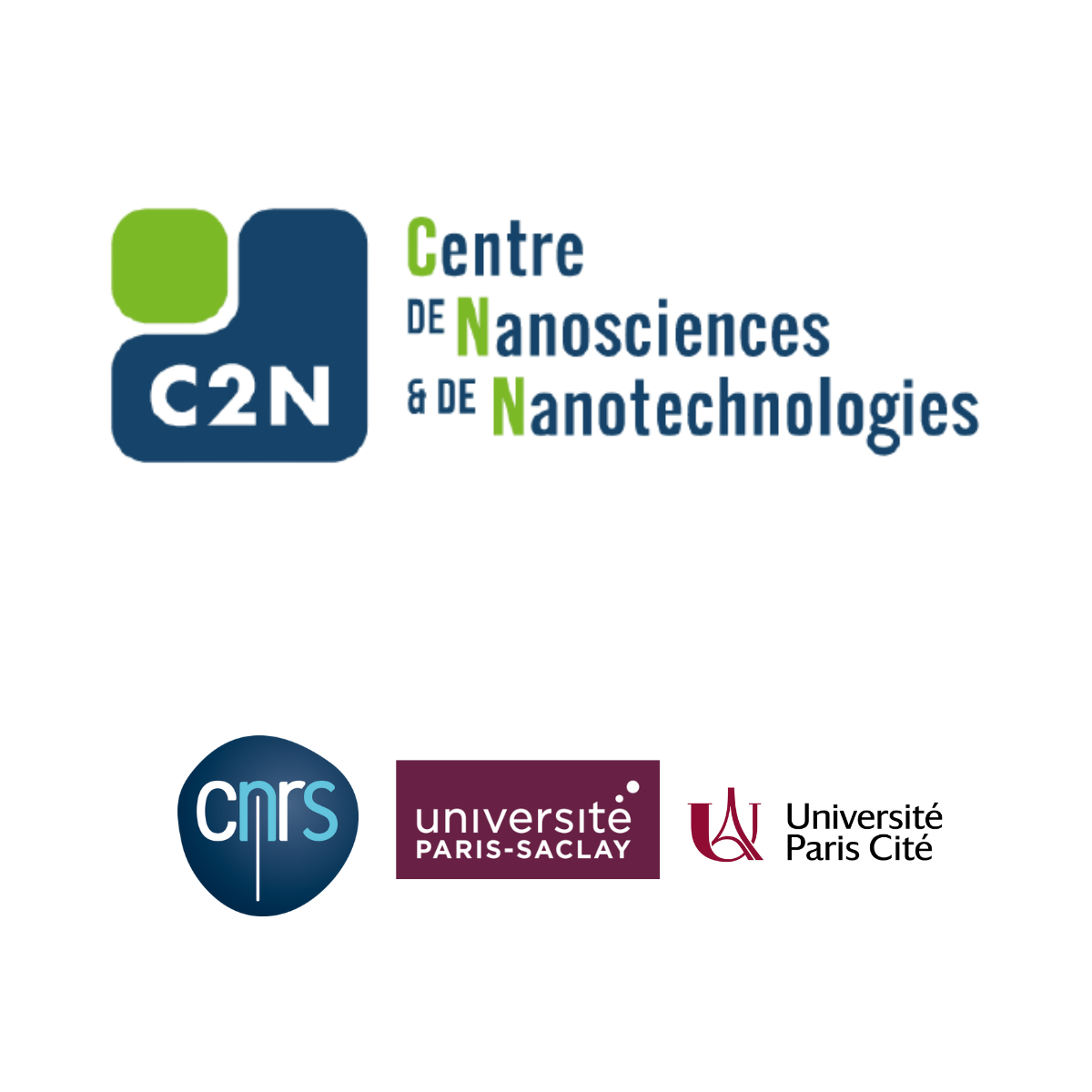
Optimisation de diodes Schottky pour les applications THz
C2N site Orsay, salle 44, Orsay CedexSoutenance de thèse
Jury members :
Alain MAESTRINI
Maître de Conférences
Observatoire de Paris - LERMA
RapporteurLuca VARANI
Professeur des Universités
Université de Montpellier - IES
RapporteurPhilippe DOLLFUS
Directeur de Recherche
CNRS - C2N
ExaminateurFrédéric ANIEL
Professeur des Universités
Université Paris-Sud - C2N
Directeur de thèseRaymond QUERE
Professeur Emérite
Université de Limoges - XLIM
Examinateur
Abstract
Le domaine du Térahertz a suscité beaucoup d’intérêt de la part de la communauté scientifique ces dernières années. La diode Schottky constitue la pierre angulaire des circuits de détection, des multiplieurs de fréquence ou encore des mélangeurs dans cette bande de fréquence, notamment grâce à son comportement non-linéaire. Les travaux menés durant cette thèse visent à optimiser les caractéristiques de ce composant pour deux fonctions non-linéaires – la détection et la multiplication de fréquence – celles-ci ayant des facteurs de mérites bien spécifiques. Un même dispositif ne saurait les satisfaire conjointement La non-linéarité capacitive est généralement mise à profit pour la multiplication de fréquence alors que la détection s’appuie sur la non-linéarité résistive associée à la caractéristique statique. Pour réaliser cette optimisation, un code particulaire Monte-Carlo (MC) résolvant l’équation de Boltzmann couplée à l’équation de Poisson a été développé. La diode Schottky est un composant largement contrôlé par l’interface métal/semi-conducteur et la gestion des conditions aux limites constitue une étape clef dans la modélisation du dispositif. Le principe d’exclusion de Pauli doit être considéré pour un semi-conducteur très dopé et une distribution spécifique pour les porteurs injectés du côté du contact ohmique a été optimisée puis utilisée dans la modélisation de la diode. D’autres effets physiques à l’interface métal/semi-conducteur ont été implémentés tels que l’effet tunnel suivant différents degrés de raffinement, le phénomène de force image ou encore l’abaissement de la hauteur de barrière par le champ électrique dû aux états de surface. Cette modélisation MC a permis de déduire un schéma équivalent électrique petit-signal aux fréquences Térahertz dont les différents paramètres sont ajustés en prenant en compte la déplétion possible du substrat pour des diodes courtes. L’extraction du schéma équivalent peut s’effectuer suivant différentes stratégies : en excitant la diode avec un signal de faible amplitude ou encore à partir de l’étude des densités spectrales associées aux fluctuations de courant et de tension. Les phénomènes physiques pouvant mettre en défaut ce schéma électrique tels que la vitesse de saturation des porteurs ou le phénomène d’ionisation par choc en polarisation inverse sont discutés. Le recours à un schéma électrique est motivé par une volonté de l’intégrer facilement au cœur d’un circuit pour une fonction spécifique et de l’exploiter avec un logiciel commercial tel que ADS (Advanced Design System) dans une logique d’optimisation. Des simulations de type « Harmonic Balance » ont été menées afin d’étudier le rendement d’un circuit de détection et d’un multiplieur de fréquence pour dégager les caractéristiques optimales de la diode sur chacun de ces circuits. Le GaAs est souvent un semi-conducteur de choix pour la réalisation de circuits aux fréquences Térahertz grâce à sa maturité technologique et à sa haute mobilité électronique. D’autres semi-conducteurs tels que l’InGaAs, le GaSb ou encore le GaN sont également étudiés. Une diode avec un couple métal/semi-conducteur présentant une faible hauteur de barrière donne les meilleurs rendements de conversion pour la détection. Pour le multiplieur de fréquence, il existe un dopage optimal en fonction de la longueur de la couche active permettant de maximiser le rendement du circuit.
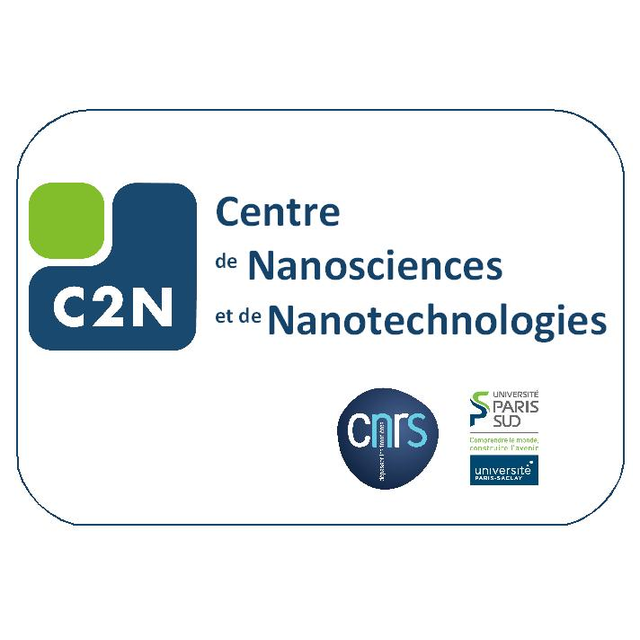
(en anglais) Ultrathin and nanowire-based GaAs solar cells
Institut Photovoltaïque d'Ile-de-France (IPVF), Amphithéatre, PalaiseauSoutenance de thèse
Jury members :
Marko TOPIč , Professeur, University of Ljubljana, Rapporteur
Nicolas CHAUVIN, Chargé de Recherche, Institut des Nanotechnologies de Lyon, Rapporteur
Stéphane COLLIN, Chargé de Recherche, Centre de Nanosciences et de Nanotechnologies, Directeur de thèse
Andrea CATTONI, Chargé de Recherche, Centre de Nanosciences et de Nanotechnologies, Examinateur
Jean-Jacques GREFFET, Professeur, Institut d'Optique Graduate School, Examinateur
Henri MARIETTE, Directeur de Recherche, Institut Néel, Examinateur
Oliver HöHN, Researcher Fraunhofer Institute for Solar Energy Systems ISE, Examinateur
Abstract
Confining sunlight in a reduced volume of photovoltaic absorber offers new directions for high-efficiency solar cells. This can be achieved using nanophotonic structures for light trapping, or semiconductor nanowires. First, we have designed and fabricated ultrathin (205 nm) GaAs solar cells. Multi-resonant light trapping is achieved with a nanostructured TiO2/Ag back mirror fabricated using nanoimprint lithography, resulting in a high short-circuit current of 24.6 mA/cm². We obtain the record 1 sun efficiency of 19.9%. A detailed loss analysis is carried out and we provide a realistic pathway toward 25% efficiency using only 200 nm-thick GaAs absorber. Second, we investigate the properties of GaAs nanowires grown on Si substrates and we explore their potential as active absorber. High doping is desired in core-shell nanowire solar cells, but the characterization of single nanowires remains challenging. We show that cathodoluminescence (CL) mapping can be used to determine both n-type and p-type doping levels of GaAs with nanometer scale resolution. n-type III-V semiconductor shows characteristic blueshift emission due to the conduction band filling, while p-type semiconductor exhibits redshift emission due to the dominant bandgap narrowing. The generalized Planck’s law is used to fit the whole spectra and allows for quantitative doping assessment. We also use CL polarimetry to determine selectively the properties of wurtzite and zincblende phases of single nanowires. Finally, we demonstrate successful GaAs nanowire solar cells. These works open new perspectives for next-generation photovoltaics.

(en anglais) Nitride nanowire light-emitting diode
C2N site Orsay, salle 44, Orsay CedexSoutenance de thèse
Jury members :
Dr. Jean-Yves Duboz (rapporteur)
Dr. Jean-Paul Salvestrini (rapporteur)
Dr. Bernard Gil (examinateur)
Dr. Jean-Christophe Harmand (examinateur)
Dr. Christophe Durand (examinateur)
Dr. François H. Julien (encadrant)
Dr. Maria Tchernycheva (co-encadrant)
Abstract :
Nitride nanowires exhibit outstanding opto-electronic and mechanical properties and are considered as promising materials for light-emitting diodes (LEDs), thanks to their high crystalline quality, non-polar facets, good mechanical flexibility, high aspect ratio, etc.
This Ph.D. thesis addresses the growth, the device fabrication, the optical and electrical characterizations and the optical simulations of III-nitride NW devices, with a special emphasis on the LED applications.
First, this thesis presents the growth of m-plane InGaN/GaN quantum wells with different In concentrations in self-assembled core-shell nanowires by metal-organic chemical vapor deposition. Then, by using these nanowires, LED devices based on two different integration strategies (namely, in-plane and vertical integration) are demonstrated.
The in-plane integration is based on the horizontally dispersed single nanowires. I have proposed a basic integrated photonic platform consisting of a nanowire LED, an optimized waveguide and a nanowire photodetector. I have also developed a nanowire alignment system using dielectrophoresis.
The vertical integration targets the fabrication of flexible LEDs based on vertical nanowire arrays embedded in polymer membranes. Flexible monochromatic, bi-color, white LEDs have been demonstrated. Their thermal properties have been analyzed.
The nanowires grown on 2D materials by van der Waals epitaxy are easy to be lifted-off from their native substrate, which should facilitate the fabrication of flexible nanowire devices. With this motivation, in the last part of this thesis, I have investigated the selective area growth of GaN NWs on micro- and nano- scale graphene by molecular beam epitaxy.

Design et fabrication de plateformes nanophotoniques pour le cou-plage fort autour de 800nm
C2N site Orsay, salle 44, Orsay CedexSoutenance de thèse
Atteindre le régime de couplage fort entre des nanocavités et des systèmes atomiques est un élément clé dans l'information quantique. Durant ma thèse, j'ai designé et fabriqué des nanocavités à cristal photonique en GaInP pour le couplage fort autour de 800 nm, longueur d'onde typique des atomes du Rubidium (780 nm) et de Césium (852 nm), les plus utilisés dans le domaine, ainsi que de l'Argon (811 nm). L'objectif est de faire interagir ces atomes avec la partie évanescente du mode fondamental de la nanocavité. Pour cela, un facteur de qualité de l'ordre de 10^5 et un volume modal inférieur à 0,04 µm^3 est nécessaire.La nanocavité est l'élément clé d'une plateforme nanophotonique. Nos plateformes sont composées d'une nanocavité à cristal photonique résonant autour de 800 nm, d'un réseau-coupleur pour collecter la lumière issue d'une fibre optique et vice versa et de guides d'alimentation pour transporter la lumière du réseau-coupleur à la nanocavité. Plusieurs défis technologiques ont émergé. La nanocavité doit avoir un fort facteur de qualité et un faible volume modal, le réseau-coupleur doit collecter le maximum de lumière issue de la fibre, les guides d'alimentation doivent transporter la lumière sans perte et, enfin, un mécanisme pour coupler la lumière des guides d'alimentation dans la nanocavité devait être trouvé.J'ai simulé, designé, fabriqué et caractérisé les éléments de ma structure. J'ai obtenu des facteurs de qualité supérieurs à 10^7 en théorie, et de l'ordre de 2.10^4 expérimentalement, détenant ainsi le record pour les cavités en GaInP autour de la longueur d'onde de 800 nm pavant la voie à la réalisation des expériences de couplage fort.

Récupérateur d'énergie vibratoire MEMS électrostatique à large bande pour applications biomédicales"
C2N Site Orsay, Salle 44, Orsay CedexSoutenance de thèse
Membres du jury:
M. Fabien PARRAIN, Université Paris-Sud, Directeur de thèse
M. Jean-Claude GOLINVAL, Université de Liège, Rapporteur
M. Philippe BASSET, ESIEE, Rapporteur
M. Denis AUBRY, CentraleSupélec,CoDirecteur de these
M. Adrien BADEL,Université Savoie Mont Blanc,Examinateur
M. Dimitri GALAYKO, Université Pierre et Marie Curie,Examinateur
M. Jérôme JUILLARD, CentraleSupelec, Examinateur
M. Philippe GAUCHER, CentraleSupélec, Invité
M. Elie LEFEUVRE, Université Paris-Sud Invité
Résumé:
Ce travail de recherche porte sur le développement et la mise au point d'un récupérateur d'énergie vibratoire MEMS à transduction capacitive dédié aux applications biomédicales et plus particulièrement aux stimulateurs cardiaques sans sonde autonomes. Cette application impose une miniaturisation poussée (volume inférieur à 1 cm3), une puissance de sortie dans la gamme allant de 1 à 10 μW et une compatibilité vis-à-vis des systèmes d'Imagerie à Résonance Magnétique (IRM). Ces contraintes ainsi que l'effet de la gravité ont été pris en compte sur tout le flot de conception afin d'obtenir un dispositif innovant en technologie MEMS silicium capable de fournir une puissance de sortie suffisante quelle que soit son orientation une fois implanté. Afin de convertir efficacement les battements cardiaques ayant un spectre étendu (de 1 à 50 Hz) pour une amplitude d'accélération faible (inférieure à 1 g), le système emploie des bras de suspension ayant une raideur non-linéaire ce qui permet d'étendre notablement la bande passante effective du système. Cette non-linéarité est ici induite de manière originale en faisant en sorte que la forme initiale des bras de suspension soit une combinaison linéaire des modes de déformée propre d'une poutre doublement encastrée. Un soin particulier a été apporté afin de modéliser ceci dans le but de prédire la réponse mécanique du système quels que soient les stimuli imposés. Afin de réaliser les différents dispositifs de test, une technologie MEMS de type SOG (Silicon-On-Glass) a été développée. Cette technologie permet d'obtenir des structures en silicium monocristallin avec un fort rapport d'aspect tout en limitant le budget thermique et se montre donc compatible avec une éventuelle industrialisation. Ceci a été prouvé via la réalisation de multiples véhicules de test qui se sont montrés totalement fonctionnels. Ainsi la pertinence des modèles théoriques permettant de prédire le comportement non-linéaire des ressorts employés a été prouvée de manière expérimentale De même,les récupérateurs d'énergie réalisés ont été testés en régime harmonique mais également via des stimuli cardiaques et ont montré une large bande passante avec une puissance de sortie équivalente à celle donnée dans l'état de l'art et ce, quelle que soit leur orientation par rapport à la gravité.
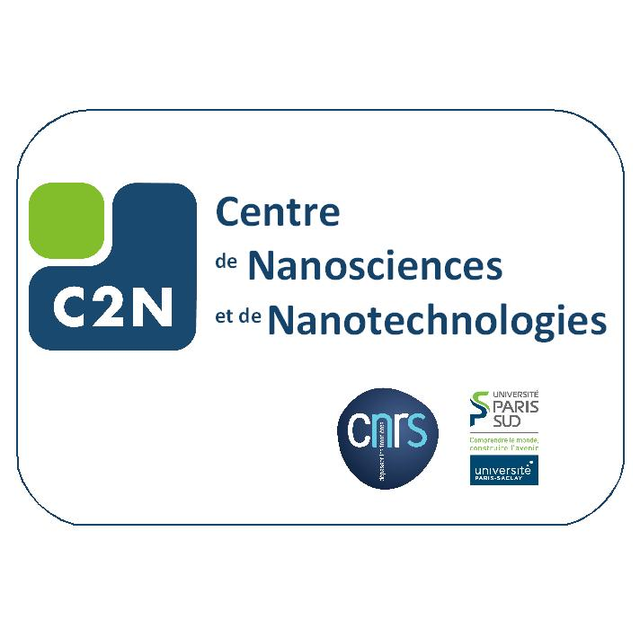
(en anglais) Growth of InGaN nanowires for photovoltaic and piezoelectric energy harvesting
C2N Site Orsay, Salle 44, Orsay CedexSoutenance de thèse
Membres du jury:
Lutz Geelhaar PDI, Berlin
Eva Monroy, CEA Grenoble
Mathiey Kociak, LPS Orsay
Silvia Rubini, IOM-CNR Trieste
Maria Tchernycheva, C2N (supervisor)
Noelle Gogneau, C2N (co-supervisor)
Résumé:
Les matériaux III-nitrures sont des semi-conducteurs à bande interdite directe qui présentent plusieurs propriétés intéressantes pour les applications photovoltaïques et piézoélectriques. En même temps, la croissance épitaxiale de ces matériaux sous forme de nanofil (NF) est de tant plus intéressant, car les NFs nitrures binaires et heterostructurés ont une qualité cristalline supérieure comparée aux homologues 2D et massifs. Dans ce contexte, mon travail est axé sur la croissance par MBE assistée par plasma (PA-MBE) de NFs InGaN/GaN et sur leur caractérisation. Trois sujets principaux ont été abordés: l'étude de la croissance d’heterostructures InGaN axiales par PA-MBE, leur caractérisation optique, et l'étude de la croissance sélective de NFs GaN sur graphène transféré. Ces études m’ont permis d’obtenir un control sur le mode de croissance d’heterostructures InGaN dans une large gamme de teneurs d’In (jusqu'à ~ 40%) et de morphologies, d’étudier leur profil de bande dans la direction axiale, utile pour la conception optimale de la structure p-i-n photovoltaïque, et de démontrer pour la première fois, que l’épitaxie sélective de NFs de GaN sur MCG lithographié est une route possible et très prometteuse pour améliorer leur homogénéité. Ainsi, des tests préliminaires ont montré que la capacité de piézo-conversion des NFs GaN peut être améliorée d'environ 35% lors de l'intégration d’une insertion InGaN riche en In dans leur volume.
Tous ces résultats constituent une étape décisive dans le contrôle et la compréhension des propriétés de ces nanostructures, et donnent des perspectives très encourageantes pour leur intégration dans des nano-générateurs à haute efficacité

(en anglais) Opto-phononic confinement in GaAs/AlAs based resonators
C2N site Orsay, Amphithéatre, Orsay CedexSoutenance de thèse
Jury members :
Rapporteur M. Pascal Ruello, laboratoire IMMM, Université du Maine, France
Rapporteur M. Bruno Gayral, Institut Néel, CEA Grenoble, France
Examinatrice Mme. Sarah Benchabane, Femto-ST, France
Examinateur M. Alexey Scherbakov, TU Dortmund
Examinatrice Mme Angela Vasanelli, laboratoire MPQ, Université Paris Diderot
Directeur de thèse M. Paul Voisin, C2N
Encadrant de thèse M. Daniel Lanzillotti Kimura, C2N
Abstract :
Nanophononics is a research field addressing the control and the manipulation of high frequency mechanical vibrations at the nanoscale. Current fabrication techniques enable the realization of nanophononic systems where acoustic phonons interact with confined optical fields, with exciting perspectives for example in the context of high frequency cavity optomechanics.The work carried out in this thesis addresses the conception and the experimental characterization of novel opto-phononic resonators. We will first present a novel confinement method for high frequency mechanical vibrations, based on the adiabatic localization of longitudinal acoustic phonons. We will then present the three-dimensional confinement of light and hypersound in micropillar optomechanical platforms operating at unprecedently high mechanical frequencies (20 GHz). This theoretical study was carried out through finite element simulations and demonstrates the potential of these systems for future high frequency cavity optomechanics experiments. Finally, we will present our experimental work on the measurement of confined high frequency phonons in micropillar systems through Raman scattering spectroscopy. Based on these results I will discuss some future perspectives.
Keywords : Nanophononics, Raman scattering spectroscopy, Optomechanics, superlattices, adiabatic cavity, micropillars.